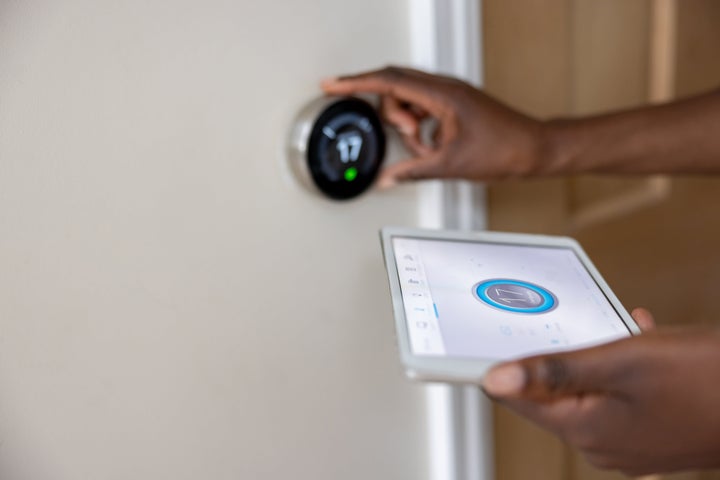
Smart devices make our lives so much easier, but like all the other heavily-used devices in our lives – our phones, games controllers, TV remotes – they tend to be absolute germ magnets.
Case in point: Vivint, which provides smart home systems, conducted stain and culture swab tests across smart home systems and compared the results to common household objects.
The team analysed how many CFUs – or colony-forming units – of bacteria had amassed on a number of smart home components.
They found smart thermostats and remotes were the worst offenders, with 32.5 and 30 million CFUs respectively.
Most of the bacteria found on these items were ‘gram negative rods’, which have been associated with hospital-acquired infections.
The study found a typical smart thermostat had three times as many CFUs as the kitchen sink, which is considered to be one of the most bacteria-infested areas in a home.
Meanwhile a smart remote has 12 times more bacteria than a toothbrush holder, while a used pet bowl is cleaner than a master control panel.
As for your smart doorbell, well that has seven times the bacteria of a typical bathroom tap.
Perhaps unsurprisingly, security cameras had the least amount of germs – likely down to them not being touched as much.
How to keep your smart home tech clean
Now we know that our smart technology is packed with germs, we need to determine how we can clean them.
Let’s start with the dirtiest item: your smart thermostat. Follow its operation instructions to lock the screen so you don’t accidentally change the settings while cleaning it.
Spray a microfiber cloth with water or glass cleaner and wipe the touchscreen to remove dirt and grime.
Avoid harsh or abrasive cleaners, and never spray anything directly onto the screen. Use this method to clean other components that have a touch screen, too.
To sanitise your smart remote, begin by removing the batteries if there are any. If it uses a touch screen instead of buttons, follow the instructions above.
Otherwise, wipe it down with rubbing alcohol, a soap solution, or disinfecting wipes. Use a cotton swab to clean small areas such as the battery cavity and a toothpick to remove debris trapped in crevices like those between the buttons. Lastly, make sure to dry the remote thoroughly before replacing the batteries.
To clean a security or doorbell camera, start by powering it down, unplugging it, and removing the batteries if there are any. Use an air duster to remove debris from the lens and any hard-to-reach places.
Next, wet a microfiber cloth with lens cleaning solution and wipe the lens. You can disinfect some parts with rubbing alcohol, a soap solution, or disinfecting wipes, but never use harsh cleaners like these on or near the camera lens.